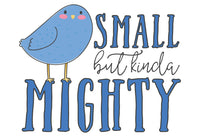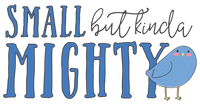Nature journaling for kids: 5 reasons you need my free download right now!
When I created my first educational play set I researched crafts and activities to include in the curriculum-supports that go with the set (these materials can be purchased with the toys as a bundle, or separately if you don't need the toys).
The activities and crafts are designed to encourage play based learning and are focused on supporting the themes explored in the play set (difference, diversity and natural science). One of the activities suggested was nature journaling for kids.
To support you all further I'm adding more resources to the curriculum supports AND I've created a FREE booklet focused solely on nature journaling. This booklet will be incorporated into the curriculum supports and can also be downloaded separately for free. The purpose of the handout is to provide educators and parents with resources to help them overcome perceived barriers to nature journaling for kids, of all ages and abilities.
I live in a city!
Good news; because most of us do live in urban environments, the handout was written with you in mind. It encourages you to spend time with kids, discovering and observing nature from where you live - in a local park, from your apartment balcony, even from inside your home or school. For example:
- get involved in citizen science projects;
- read books with kids about wild animals that live in the city;
- help children do water cycle and other experiments that illustrate how we live in an eco system, helping them understand that urban environments are interconnected with other environments like the wilderness and the oceans.
I can't afford fancy art supplies or expensive books!
Me neither! My first video on how to make a nature journal shows you how to put together something cheap, cheerful and fun, made using hair ties and brown paper lunch bags (seriously!). I have listed the art supplies I used in my journal below in case you're especially interested in any of them but I strongly encourage you to fill your journals using the art supplies you already have on hand.
The free booklet includes a ton of book suggestions - and all of the books I recommend I was able to borrow from my local public library. Before you roll your eyes and think to yourself ("ugh, book lists"):
- a pet peeve of mine is book lists which are just that - a list of book titles. How is that helpful?! My recommendations give you useful information like: is it a board book, is it illustrated with art or photos, and is it fiction or non-fiction? I provide a short summary of what the book covers and most importantly share specifically how the book is useful in encouraging kids to spend time outside and learn about nature through observing the world around them.
- Age grouping. Honestly, I find categories like "recommended for ages 6-9" pretty unhelpful. Most children don't read (or comprehend) at exactly the same level as their age cohort. Something that's perceived as too simplistic for the average 8 year old might be perfect for a 10 year old interested in reading independently. Instead of grouping books by chronological age I've listed the most straightforward books first (fine for babies and toddlers) then as the list progresses the books get progressively more challenging.
My kid is only a preschooler
Perfect time to kick-start their interest in the outdoors and there are resources in the handout for you too. Read books with them to show them the kinds of plants and animals they can find outside. Take some books and toys outside with you and hang out together, talking to them about the things you see, hear, smell. Take a simple nature scavenger hunt to the playground with you and show them what you spot along the way.
As I note below, kids don't need to write, draw, or use scissors in order to nature journal!
I have several disabled children in my class
From the start I've wanted to help parents and educators do nature journaling for and with kids that is accessible:
- financially
- to those who live in an urban environment
- to those with fine motor challenges including folks with developmental, cognitive and learning disabilities.
You can nature journal from a park (the spot where I took my pictures for journaling is wheelchair accessible), from the sidewalk or even from indoors. Maybe this is the perfect opportunity for you to suggest to the principal that you fundraise for a community garden at school?
Here's my video on how I filled my nature journal, packed with kid-friendly ideas:
My child just doesn't seem interested
As I've said before in relation to AAC and modeling language, what we do is more important than what we say. Do you make time to go outside? When you are outside are you observing what's around you or are you on your phone? Are there opportunities for you to leverage your child's intense interests and connect them to nature somehow?
If your child loves crafts, can you do them (or versions of them) outside? If a kid loves video games then convince them to play Pokemon Go because you want them to help you learn and then play together as friends. Maybe they are fascinated by cars, trucks and trains - adapt your treasure/scavenger hunt lists to include those things in addition to plants and animals.
Got a situation you think is intractable? There are so many ideas in the download but if you're still stumped then drop a comment and let's see if we can crowdsource a solution! This is too important an issue to ignore.
My Spring 2019 nature journal - supplies list
Some of the supplies I used in completing my nature journal are:- Watercolour pencils by Caran d'Ache
- Paint pens
- I get most of my ephemera (book pages, sheet music etc) from BurkeSevenVintage on Etsy.
- Tree stamp set
- Fiskars Tag Maker - I got the original one on clearance at Michael's
- Lever punches - I tend to pick these up if they are what I'm looking for and on sale. I don't have the set I've linked to but it seems like a good deal.
- Weather stencils from Pleasant Supplies Co on Etsy
- Source for free and paid downloadable vintage images - The Graphics Fairy
- Cardinal and Bee stamps from Cherry Beam Creations on Etsy
- Distress oxide ink pads (ones used are Broken China, Faded Jeans, Peeled Paint, Cracked Pistachio, Wild Violet, Vintage Photo and Fossilized Amber)
- Matte gel medium. The one I've linked is a well-regarded brand. I'd recommend investing in some as you can use it as a glue and sealant and it doesn't leave a sticky finish like Mod Podge.
Where possible, I do use affiliate links, please note that if you click on them then I will receive a small commission but your cost remains the same.
Would love to hear what you think about the videos and downloads! Feel free to share in the comments.





Leave a comment